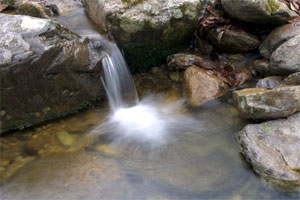RCA News


RCA News
View
| IAEA’s Work for World’s Development Goals Highlighted Nuclear Techniques to Solve Global Problems Reconfirmed Recognized by UN Commission on Sustainable Development | |||
|---|---|---|---|
|
Name
admin |
Date
2005.03.15 |
Views
4164 |
|

At a recent UN session of the Commission on Sustainable Development (CSD) held at UN in New York, which concluded 30 April, vital water management was the key topic that the world should greatly stress. In this connection, the use of nuclear techniques would have more enhanced role to solve such problems and more appropriate recognition of the advantages using nuclear techniques can be elevated.
UN Secretary General Kofi Annan outlined just how vital water management was at the CSD session. “Poor water management would degrades and squanders a precious resource. It is linked to the urbanization of poverty, since rural impoverishment rooted in water and land-tenure issues drives people to migrate to already crowd cities and most often to their growing slums. So the stakes are high. Without an integrated approach, we could face a tangle of problems. But with one, we could generate a cascade of progress,” he said.
The IAEA’s activities highlight how nuclear science and technology can help boost incomes and support broader-based efforts for meeting basic human needs. Considering that the global development goals are focused on helping people in the world’s poorer countries, the IAEA is rightly doing to fulfill such mandate through amplified use of nuclear techniques. For example, the Guarani Aquifer System is just one of 73 IAEA projects looking at how the world’s dwindling freshwater supplies can be sustained. The aquifer is shared by Argentina, Brazil, Paraguay and Uruguay and is considered to be one of the most important fresh groundwater reservoirs.
It’s an international effort, with the IAEA’s focus on finding ways for all four countries to share aquifer in a way that won’t cause it to run dry into the future. A nuclear tool, called isotope hydrology, is used to give scientists indispensable information about how much water is available in the aquifer, its quality, how quickly it is replenished and where it flows from. Piecing that information together reveals how the precious resource can best be managed. The IAEA is using such isotopic tools to encourage sustainable water management in China, Indonesia, and many other countries across the globe.
Land degradation is also firmly on the IAEA’s agenda, as its work toward sustainable development of the earth’s resources in a way that allows social progress and economic development. For example, since 1997 the IAEA has supported several countries including Pakistan in the fight to turn arid wasteland into economically productive fields. Efforts have paid off with salt-tolerant plants now growing in the wastelands, providing sources of food or income for farmers. Among its roles, the IAEA is serving as lead partner for a number of projects under the Partnerships for Sustainable Development initiative born at the World Summit in Johannesburg in 2002.
Attachments




